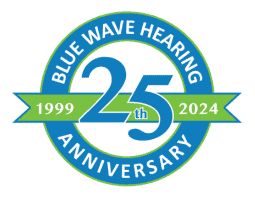Latest posts by Dr. Molly Dillon (see all)
- Alcohol and Hearing Health - April 9, 2025
- How Smoking Can Harm Your Ears - March 11, 2025
- Succeeding in the Workplace with Hearing Aids - February 10, 2025
Spinning, tilting, nausea, headaches, and hearing loss are common symptoms of vertigo — a disorder that approximately 40% of the United States population reports experiencing at least once in their lifetime.
Vertigo is more common in females and as people age, but it can happen to anyone, including children. While vertigo as a condition is usually harmless, the symptoms and underlying causes often disrupt everyday life. In chronic mild cases, it can lead to fatigue, struggle with work, and anxiety; in severe cases, it can result in difficulty walking or standing, and can lead to sudden falls and injury.
- Vertigo is usually the result of a disturbance in equilibrium due to a disorder in the vestibular system, an area in the inner ear responsible for maintaining balance.
- Several disorders can cause vertigo, with the most common being benign paroxysmal positional vertigo, commonly known as BPPV. Approximately 50% of vertigo cases are caused by BPPV. Other diseases, such as Ménière’s disease and vestibular neuritis, can also cause symptoms. Ingestion of chemicals that are poisonous to the ear (known as “ototoxic”) may also cause vertigo. Each disorder has its own unique causes, effects, and treatments.
- A number of maneuvers can be performed in the office of a trained professional, or sometimes in a patient’s home. The goal of these maneuvers is often to reposition the head and body to move debris out of the inner-ear canal and into an area where it will no longer cause vertigo symptoms. These procedures are effective in most patients, but they do not prevent reoccurrence. When symptoms reoccur, these procedures can be used again to relieve them.

